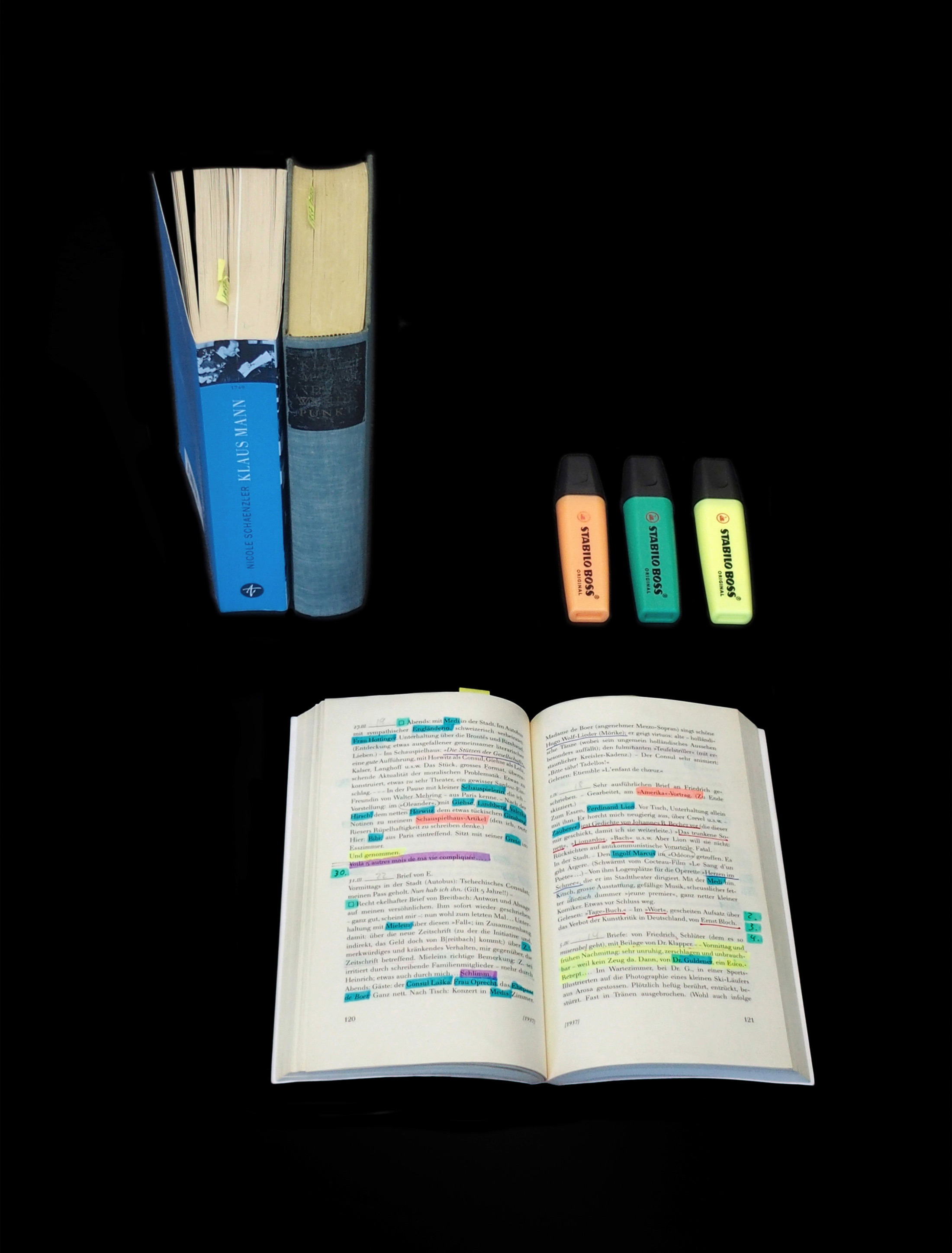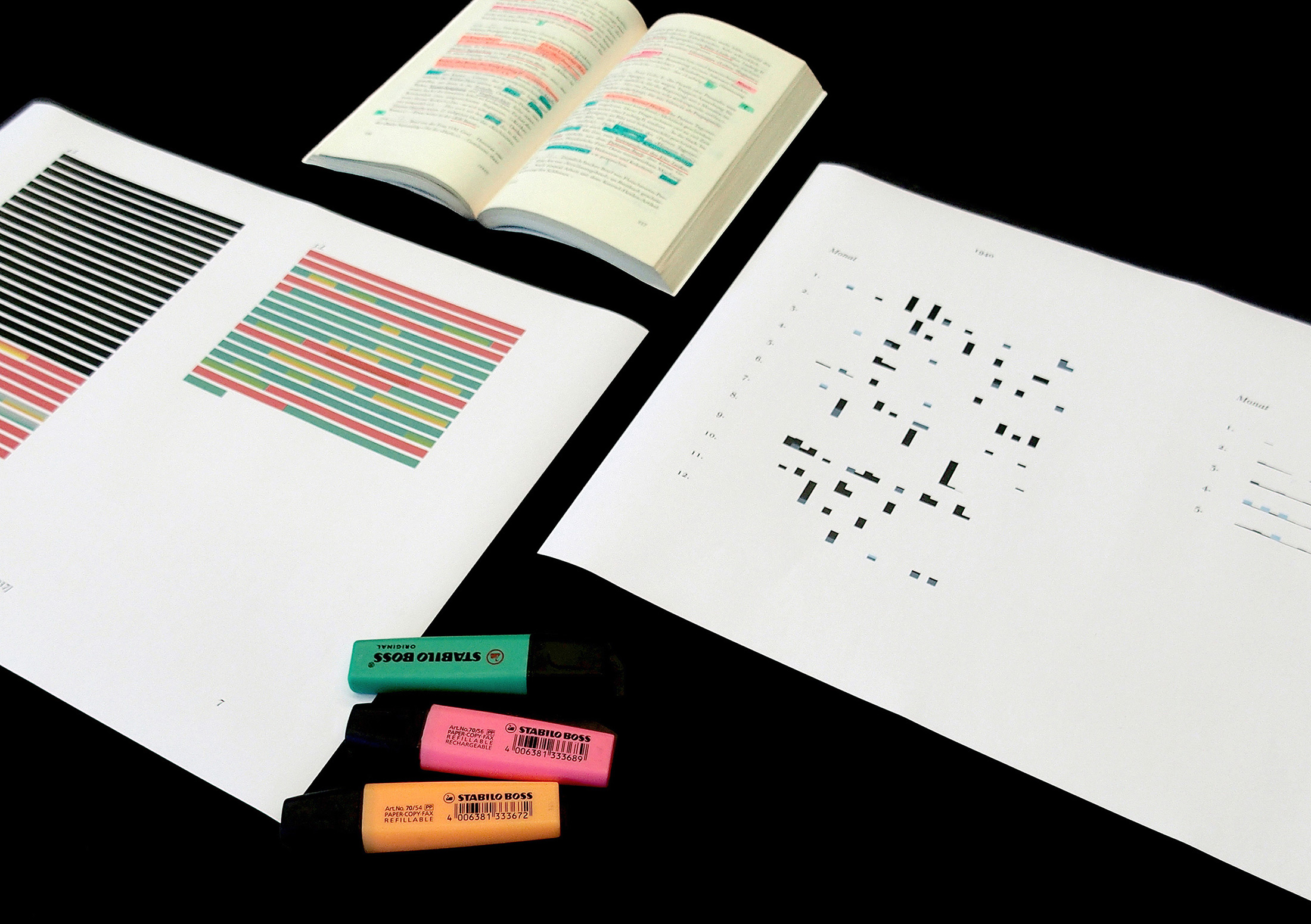Visuelle Kommunikation
Master
Maximilian Hubertus Rück
NINETEEN THIRTY-SEVEN
Visualizing the Text Structures of a Biographic Year



Reading a text, every reader usually associates it with individual mental images. In addition to those associated images, a text also carries an image of its quantity, its structure, and its composition. Different text genres are describing events, story lines, individual information and relationships in a different way. Every text genre opens up a different image of text structure to its reader. The connection point between the verbal and the visual track is directly linked.
But how can such images of text structures be visualized? What differences are visible, when they are confronted, and which additional value can they transport for a better understanding of their textual structure and maybe even their content?
The present study is using the same story line of three different text genres. Images of the structure and function are analyzed and filtered out.
As one of the most holistic representations of a complex text report, the material for this present study consists of the diary records of German writer Klaus Mann and the autobiographical and biographical writings about the same period.
Diary, autobiography and biography in juxtaposition show an unequal transmission of textual rhythm and fragmentation, order and disorder, which becomes visually recognizable. The complex matter of a life report will no longer be texted or read, it shall be experienced in a nonlinear way. Comparisons are possible without being verbally defined or evaluated by written words. It is a navigation between visual and verbal aspects which guides readers. Its aesthetic quality becomes a transmission of information between thought, word, form, and graphics.
By reading and looking at a written text, not only the handwritten or typographically set image is recognizable. It also provides important information between the characters. The construction and installation of a text of individual sentences, words, characters, and blank spaces convey important information of language, content, and text structure.
Whether by deliberate omission by the writer itself or due to an editorial omission in the printed book publication, every text has its information gaps. In this study such gaps become an equally as important element of information as the information provided by the text itself. Non-information will be used as information.
This research tries to convey the structure of a text so that the organization, content, and key elements of a text can be visually experienced and compared. And it brings back the transmission of rhythm and fragmentation, order and disorder of a life report. Usually a published book, such as the report on Klaus Mann’s life, loses its transmission of rhythm and fragmentation, order and disorder, which are transmitted by their visual impact only in the originals. Originals communicate a much more versatile impression by their handwritten uniqueness, originality and patina, which the printed text does not allow in a publisher’s edition. It deals with the question of how to escape the linearity of a text. Because in comparison to a written biographical portrait the course of a life itself is not bound to linear structures.
Maximilian Hubertus Rück
www.maximilian-rueck.ch
Institut Visuelle Kommunikation, FHNW HGK, Freilager-Platz 1, CH-4023 Basel
+41 61 228 41 11, info.vis_com.hgk@fhnw.ch, www.fhnw.ch/hgk/ivk



